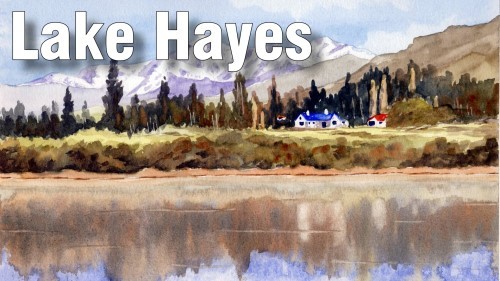How to Make a Colour Wheel in Watercolour
Skill Level : 1 Beginner, 2 Intermediate, 3 Advanced
Medium : Watercolour Painting
Subject : General
Tutor : Dennis Clark
Class Length : 2 hours 05 minutes
Avg Rating : 
Gold Level or Higher Class
Class Description
Learning the COLOUR WHEEL is one of the most important aspects of painting. If you want to advance quickly then please take the time to study and memorize, as well as understand, just how the colour wheel works. This knowledge is applicable to ALL mediums.
In this lesson you will learn:
1. How to use the primary colours
2. What are the secondary and tertiary colours
3. How to paint the colour wheel for your own reference.
Latest Reviews


Definitively a must class. It is not just about painting a colour wheel, it is all about understanding it and how to mixe colours. The colour charts are just as important and a great personal reference. I am a big fan of minimal palette, simply because I beleive that if I can learn to mixe almost any colours I want then I would have master colour theory. The later will help me down the road to avoid colour errors, shadows and lights mistakes.
Thank you for all the work done in preparing this so very important class.
Annie


Most important lesson to know, and Dennis both explains, and shows the how and why of colours and mixing superbly. Concise and to the point, learning your colours in this fashion will make for very few if any failed paintings.
Val
Class Tutorial
The three primary colours

Label the actual colours you are going to use. In this case, they are cadmium yellow, cadmium red, and ultramarine blue. Do note that the same procedure can be used in making colour wheels for other variations of colours.(ex. Scarlet red, cobalt blue, lemon yellow)

Use a strong concentration (opague as possible) of each colour to fill in the sample box above the label, then add it to the second stripe to denote the pure tone of the paint.
The secondary colours

To make the secondary colours, start by mixing an orange with equal amounts of the same strong concentration (not too watery) of yellow and red. Be sure to keep brushes clean when mixing so as not to contaminate colours. Use the same procedure with blue and yellow to make green, and red and blue to make purple. Paint them into the appropriate stripes on the colour wheel.
Adding the tonal ranges

Fill in the remaining colour stripes. First put the light tint in every stripe. Then go back and lay another glaze over the two stripes under the basic tone. Then lay a third glaze over the tone just under the basic tone. Adjust, if needed, to show a clear progression of lighter tints down the colour wedge.

Add a touch of the complementary colour to the Chroma colour and then add to the top row to create the shadow colour.
Follow this procedure to paint each of the primary and secondary colours.
Mixing black

Start with a strong concentration of cadmium red. Add ultramarine blue in sufficient quantity to produce a very dark colour. Then add a touch of yellow. Adjust colour to achieve a black tone. Paint it into the top half of the circle in the middle of the wheel.
Enjoying This Tutorial?
The tertiary colours

To make tertiary colours fast and easy, take the lighter of the two components and add a small amount of the darker one. Paint that onto the second stripe. Now use the same technique as you did above to lighten it and paint in the remainder of the stripes in that colour. Then go back and use the glazes technique to create the tints on the remaining stripes.

To make the shadow color, use either of the two complementary colours on either side of the opposite colour. Paint that into the top stripe.

Finish up the tertiary colours by using the same format to work your way around the colour wheel, including tints and shadows.
Finishing up

Go back over the colour wheel to be sure you have all the tones in the correct intensity. Note that one of the most important keys to making a good colour wheel is to continually work with a clean palette and brush to prevent colour contamination. Also remember that each manufacturer's paints may not be exactly the same colours as the ones you are using, so your colour wheel may not look exactly like the one in this lesson or someone else's colour wheel.
Final painting

You May Also Like |








